The Island’s register of historic buildings and the process under which properties are added to that list has come under criticism for being a blunt tool for a complex process.
Grade one: Buildings and places of exceptional public and heritage interest to Jersey that are outstanding examples of a particular historical period, architectural style, building type or archaeological site. 
Grade two: Buildings and places of special public and heritage interest to Jersey that are high-quality examples of a particular historical period, architectural style, building type or archaeological site, that are either substantially unaltered or whose alterations contribute to its special interest. 
Grade three: Buildings and places of special public and heritage interest to Jersey, being important, good-quality examples of a particular historical period, architectural style, building type, or archaeological site, but with alterations that reduce the elements worthy of listing. 
Grade four: Buildings and places of special public and heritage interest to Jersey, being good example of a particular historical period, architectural style or building type, but defined particularly for their exterior characteristics and contribution to townscape, landscape or group value.
Consultancy MS Planning said that many Islanders were unaware that owning a property that was listed in one of the top three of the system’s four grades meant that extra protection was given and planning permission needed for any interior alterations.
The historic register and its four grades is designed to protect buildings that have significant public interest.
Planning’s director of policy and projects Kevin Pilley said that recently around 25 per cent – the highest level recorded – of people who owned historic properties granted access to States historic surveyors.
MS Planning director Mike Stein said that some buildings were being listed at grade three or above without proper investigation.
Giving an example he revealed that one client’s home had been listed at grade three, which carries protection of interior features, despite the historic farm property having been stripped out and converted three years ago.
‘I think the concern is that the interiors of buildings are being listed without having been properly investigated,’ Mr Stein said.
‘How does an owner of a listed building approach planning to deal with an interior change? There’s no formal process for that.
‘It’s not classed as development under the law so it shouldn’t have to be done through a planning application.
‘In the past we’ve acted for a number of clients and been successful, virtually without exception, in getting their property’s listing downgraded or removed.’
Planning is charged with keeping a register of historic buildings, but cannot always gain access to homes if owners refuse entry.
Although the Environment Minister has the authority to force a viewing of any private home in the Island, this is exceptionally rare.
Survey teams, therefore, can be left having to make judgments about homes based on previous information.
Defending the listing process Mr Pilley said that Islanders were free to engage with the department, which wrote to every householder setting out its reasons for listing their property, to raise concerns over any listings made.
He added: ‘We would say to owners that if they want clarity about what’s of interest about a building and what isn’t then by all means engage with us as we are happy to do that.
‘But where people say they don’t want us to come along to their home we respect that and make a decision based on information that we’ve got.’
MS Planning’s historic building consultant Stuart Fell said there was little guidance for Islanders compared to the pages and pages of information made available by English Heritage, which oversees the UK’s list of historic properties.
‘I think it’s one of the most obscure processes people come across,’ he added.
The Radisson
It is the building that every Islander loves to hate. It even won an award a few years back for being such a monstrosity and UK architects who visit Jersey are still known to question its bizarre orange colour. Plans for the Radisson started being made back in 1992 when the States approved the first blueprint for the area. A scheme submitted by German company Bilfinger & Berger Ltd was approved in 1999 by the then Planning Committee but shelved when the company pulled out of the UK two years later. In 2004 plans for the Radisson we know today were submitted and then approved the following March by the Planning Committee, which was then headed by Senator Philip Ozouf. It followed battles both behind the scenes and publicly over the years, including rows between the Waterfront Enterprise Board and Planning about the size and scale of the building. 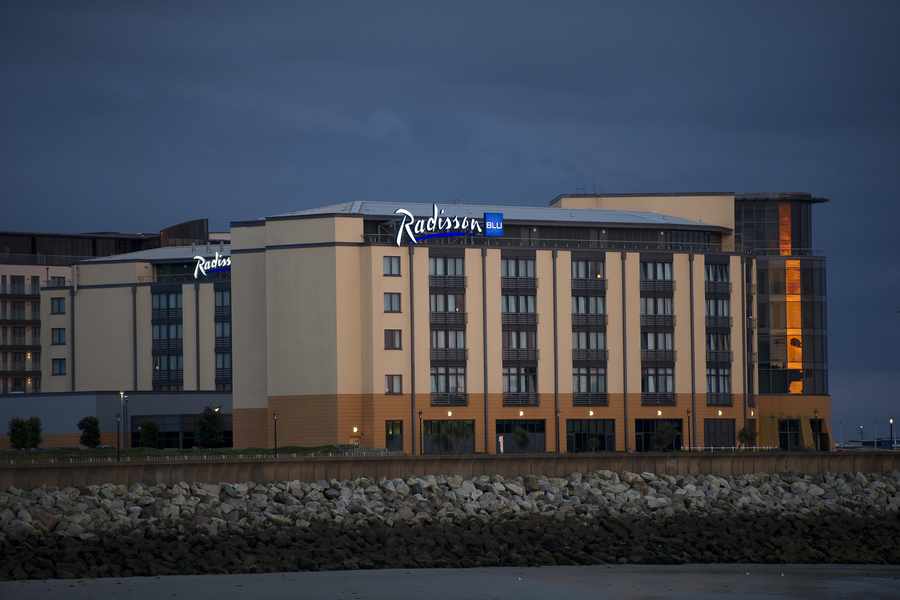
The Waterfront
It was controversial when the land was first reclaimed from the sea, it was controversial when it was proposed that we build on it and it is still controversial today as the States tries to develop it further. The 1990s was a time of particular debate, as the Waterfront Enterprise Board continued to develop land reclaimed from the sea. In particular, the board was accused of wasting public money when, in 1996, it commissioned the Steam Clock, which occupies a site between St Helier Harbour and the Weighbridge. The clock continues to chime, bubble and squirt water and all these years later people still use it as an example of how not to spend public money. The Cineworld building also proved controversial when it was built, and well into the 2000s there were public meetings, petitions and protest rallies as further development of the area was planned. WEB may have changed its name to the Jersey Development Company and amended its constitution but it has inherited much of the suspicion levelled at it by Islanders. It is with that background that the company is currently trying to develop a Jersey international finance centre at Esplanade Square. 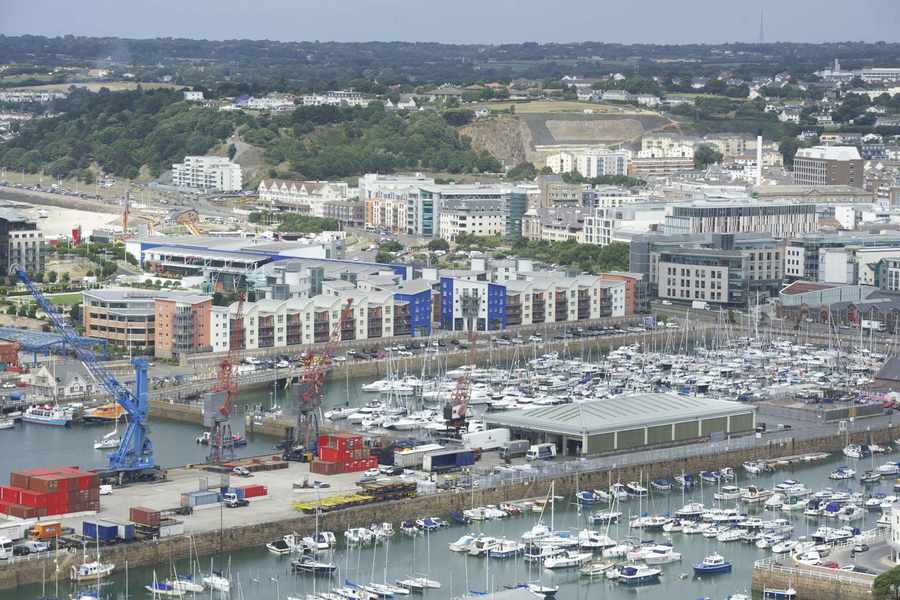
Portelet Bay
If you have ever come into Jersey on the ferry from the UK and stood on deck just as you round the south-west corner you will no doubt have heard someone utter: ‘Just look at that monstrosity.’ They always are, of course, referring to the Portelet Bay development. Islanders were asked to wait until the devel- was finished in 2011 before passing judgment. And, most were in agreement: they hated it. Some, however, rather like it. Built by Dandara, the development has won six architectural awards and when finished the homes cost between £705,000 for a flat and £2.75m for the largest house. But, even today some Islanders still haven’t been convinced by the scheme, which was passed by former Environment Minister Freddie Cohen against planning officer advice. 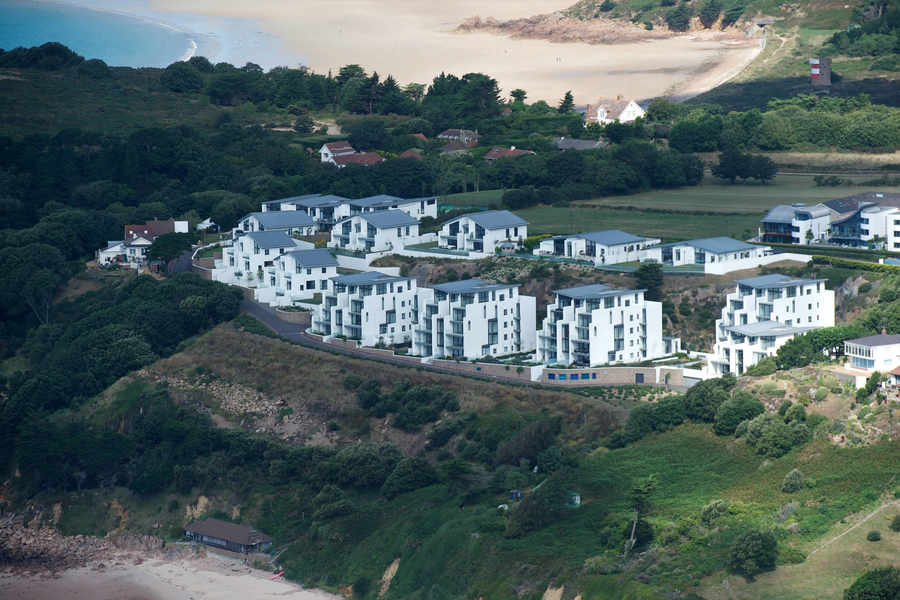
Janvrin’s Farm
Islanders were outraged when a much-loved restaurant and 17th century granite farmhouse was demolished without warning on Saturday morning, 11 March 2000. Janvrin’s Farm, which had recently been sold to property developer David Sheppard, was being considered for ‘listing’ but was not on Planning’s record of protected buildings. Developers Janvrin Holdings later put in an application to build flats on the site. Mr Sheppard has since gone on to plan developments for a number of other sites, including Field 621 in the green zone between Woodbine Corner and the road to Ouaisné, which also caused some concern. 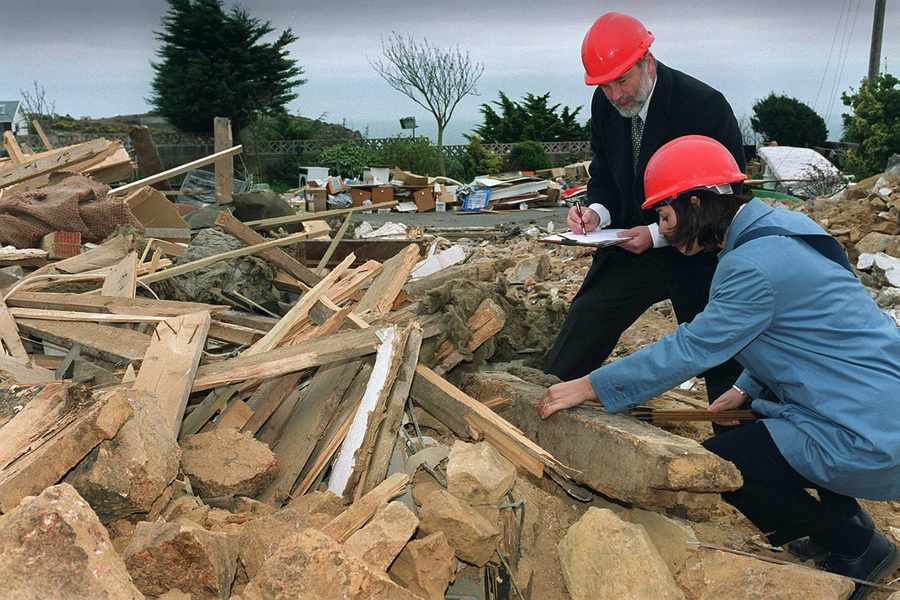
The Co-op’s Charing Cross site
This is another one that has been rumbling on for years. The Co-op has wanted to redevelop the site and a number of surrounding buildings for a while but only unveiled major plans for it in 2012. For a year and a half the development was discussed and debated both professionally by those directly involved and around kitchen tables by those who were not. Most of the talk revolved around the loss or not of six listed buildings at the site. The controversy came to a head last August, when the planning applications panel, which decides some applications under delegated powers from the minister, rejected the Co-op’s latest plans for the site, which included creating a bigger store and new shop front and offices. The scheme would have resulted in the loss of four of the six historic buildings and was recommended for rejection by planning officers. The business then lodged an appeal with the Royal Court against former Environment Minister Rob Duhamel, who is held ultimately responsible for any planning decisions made. In December 2014, the Co-op received permission to build a Premier Inn at the site, above a revamped shopping store. 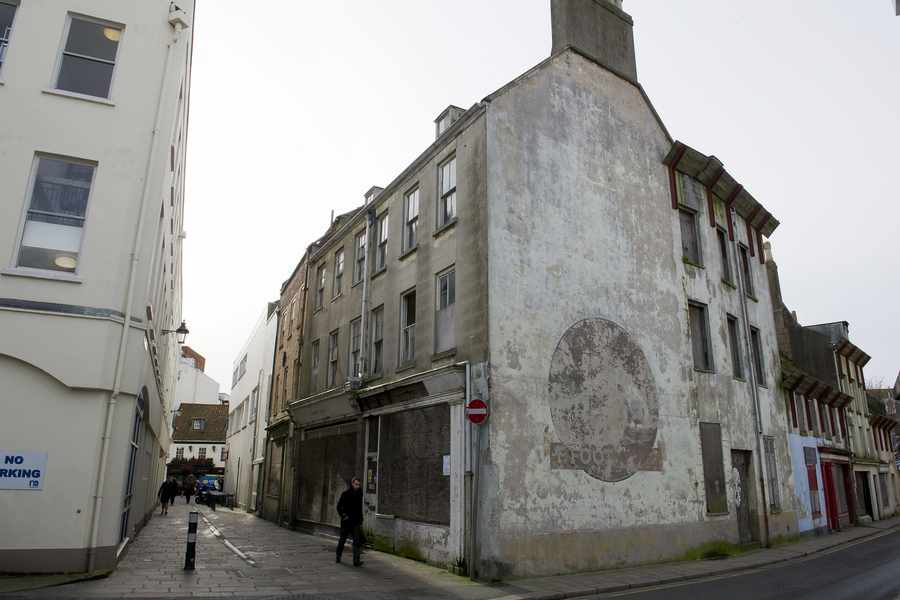
Colomberie House
When it was demolished in 1998, amid much protest, Colomberie House was regarded by many as a major loss to the architectural history of St Helier and the Island. It had been one of the last 18th century town houses left in St Helier and had been the ancestral home of the Hemery family, one of whom had raised the alarm on the day of the Battle of Jersey in 1781. The building was taken over by an accountancy firm and then slated for demolition. Save Jersey’s Heritage, helped by architectural historians Dr Warwick Rodwell and Ptolemy Dean, mounted a vigorous campaign to save it. At one stage, Colomberie House had housed the Collegiate School for Girls and former pupils joined members of the public at a protest march through town. Even the planning committee tried to reverse a previous decision to allow its destruction, but the owners took the committee to court … and won. 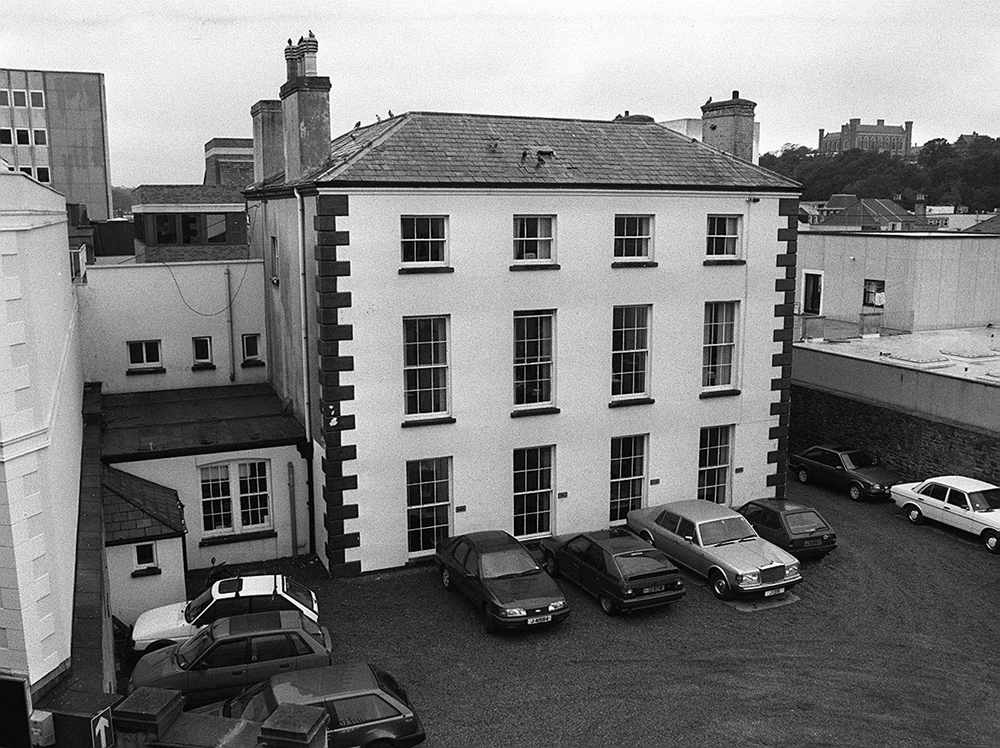
Government House
The home of the Island’s Lieutenant- Governor was saved from demolition in 1990 following a successful campaign by Marcus Binney and Alastair Layzell, who then went on to set up Save Jersey’s Heritage. 
Hue Street
Save Jersey’s Heritage also helped to save a row of 18th century cottages and shops in Hue Street. It bought the buildings and restored them before selling them on. Today they still contain businesses and residential accommodation. 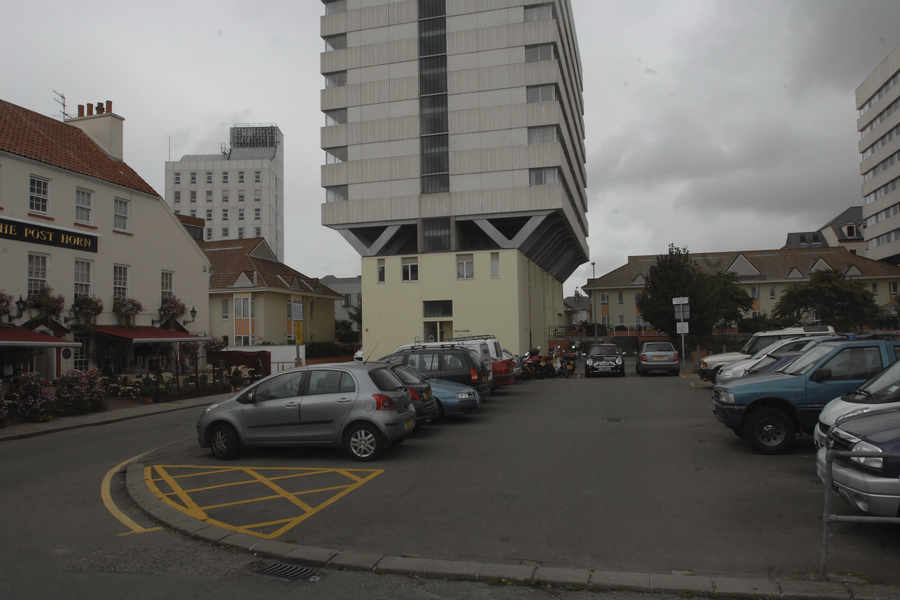
16 New Street
The Georgian town house officially reopened its doors in 2011 following an eight-year restoration project by the National Trust. Over the years it was a home, a gentlemen’s club and a YMCA, and today it is used by the trust for events and as a museum.
Read the Town Crier, Le Rocher and a whole host of other subjects like mortgage advice, business, cycling, travel and property.
© 2023 Jersey Evening Post. All rights reserved.
Get involved
Useful links
About the website
Powered by PageSuite